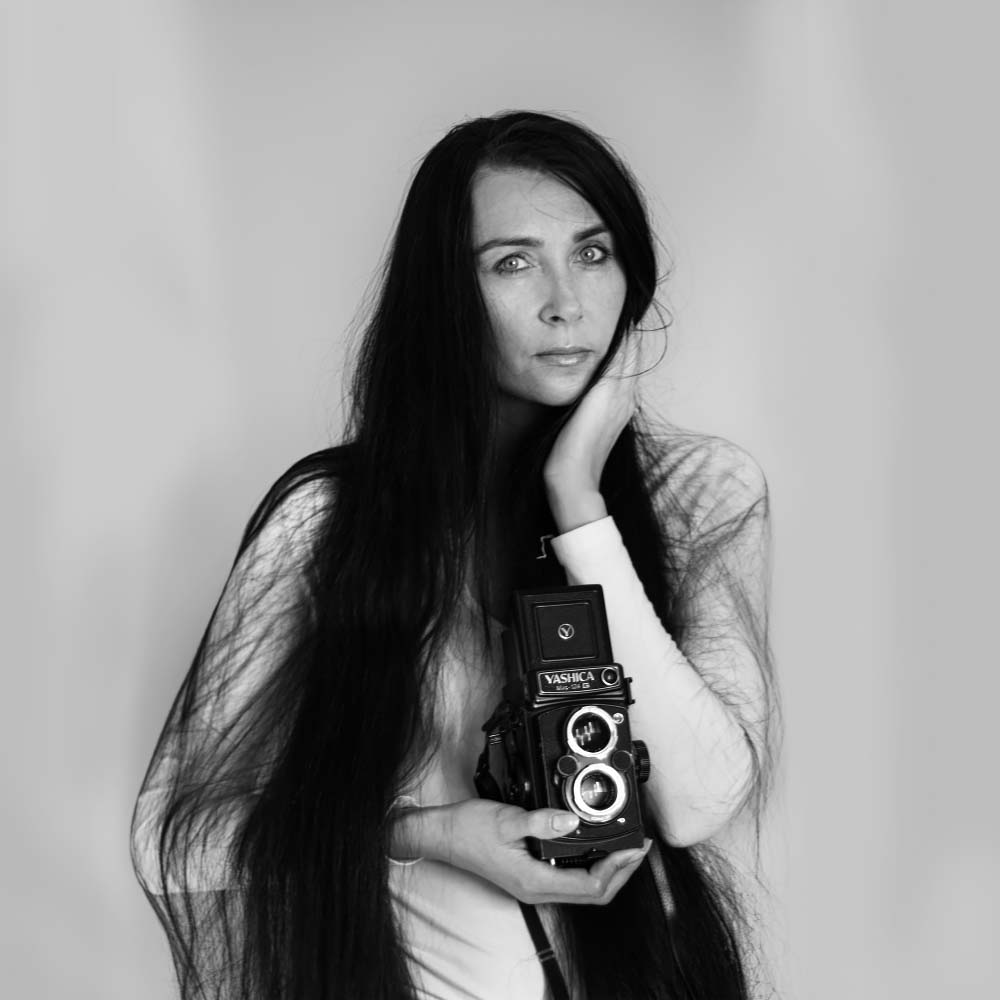Joanna Borowiec, a graduate of the European Academy of Photography in Warsaw, diploma thesis in the Creative and Expressive Photography Workshop, Dr Izabela Jaroszewska. Member of the Association of Polish Art Photographers (ZPAF). Scholarship holder of the Ministry of Culture and National Heritage 2020.
Photography Workshop. Enthusiast of medium- and large-format analogue photography. Uses historic photographic processes like ambrotype – wet collodion technique, cyanotype e.c.t. The main topic of her photos is humanistic photography, human.
Winner International Photography Awards IPA 2021- category Deeper Perspective Photographer of the Year. She was also awarded the third place in Photographer of the Year category of the Black& White Spider Awards competition. Prize-winner of the Portfolio Black + White Photography UK, the Portfolio Black & White for Collectors Of Fine Photography Canada, the Portfolio 2012 Shot Magazine USA. Her works and interviews with her were published in many magazines, i.a. the Black+ White Photography UK (the cover), the Shot Magazine USA, the Black and White Magazine Canada and in national magazines. Her photographs can be found in public and private collections at home and abroad, i.a. in Switzerland, Spain, Italy, Sweden, USA e.c.t. She has participated in individual and collective exhibitions at home and abroad, i.a. in Poland, Germany, Spain, Singapore, Canada, USA e.c.t.
Blue Story
Many of my cyanotypes are created by layering a combination of objects and film imagery with carefully timed light exposures for a depth of blue/indigo colors. Inspired by nature and how we interact with it,
I arrange natural objects such as leaves, flowers and vines with human made objects or images of objects. I choose to work with cyanotypes "live", in sunlight for the spontaneity of arranging the objects and often have a general idea of what I want to do allowing for of-the-minute additions and subtractions of objects and timing of exposures. I sometimes add acryl paint, or colored pencil to a washed and dried print. Cyanotype is a contact print process using treated, UV light sensitive
paper. It results in a Prussian blue final print. Also known as photogram, sun print. The English scientist and astronomer Sir John Herschel discovered this procedure in 1842. (...)
Due to the coating and printing process Cyanotypes are always non reproducible unique items in itself.
Dreams Unfinished
It is a story about pain, love and longing. The photos were taken after the death of my father. He passed away suddenly in his sleep.
I could not understand what happened, to come to terms with the loss.
I looked for him everywhere and imagined he was asleep and dreaming. As a result, I have contact with him in the dream world he is with me.
Works depict dreams, motifs, shards of memories which probably appear in everyone's dreams. Dreams - eternal companions of human life - encourage us to analyse our own experiences and understand our fate. They enable us to bring to surface deeply hidden secrets and go beyond the earthly matters.
These records are born out of imagination and perishable ephemeral memory. They are not meant to be unambiguous; they should leave the door open for free interpretation and free reading to enable everyone to supplement them with their own story.
Glass Faces
"The eyes and faces all turned themselves towards me, and guiding myself by them, as by a magical thread, I stepped into the room" Sylvia Plath
Glass Faces present unique, enchanting, climatic and hypnotising portraits. Bewitching with natural beauty and somewhat unreal, mysterious, silent and oozing various emotions. Faces of friends and people we have just met. Ambrotypes - positive images created on a sheet of glass using the 19th century wet collodion process - are the vital element of the project.
The ambrotype is inimitable. You may try to reproduce it, but a piece created on black glass remains unique.
Ambrotype - Ambrotos means immortal...
I was born in a camp
The story of Jan Chmiel, who was born in the Waltrop forced labor camp - a city in western Germany. According to a record issued by a German official, he was born in 1944. , according to information provided by the mother in 1942.
Of the 143 children captured in the Waltrop camp, three survived, including Jan.
